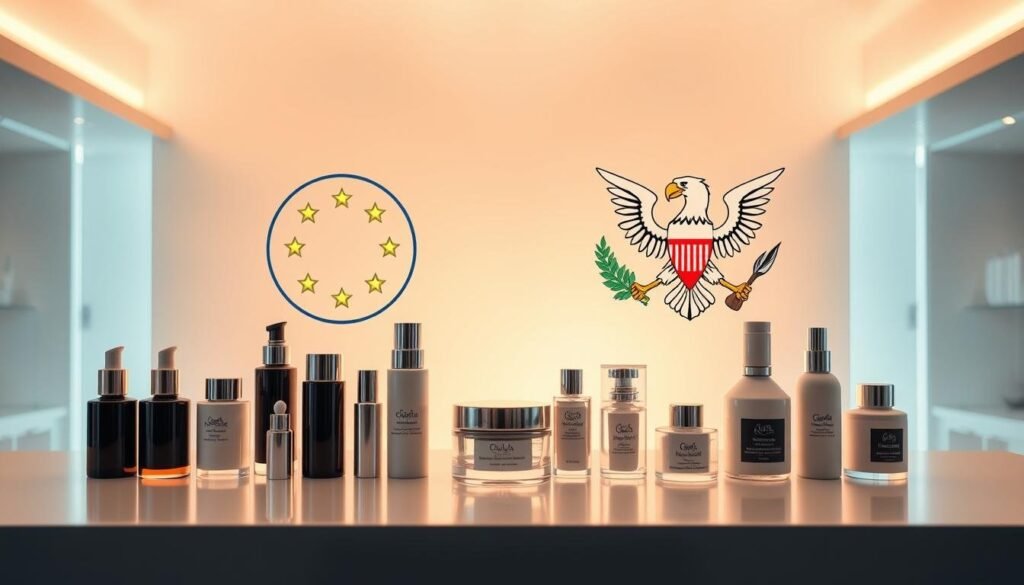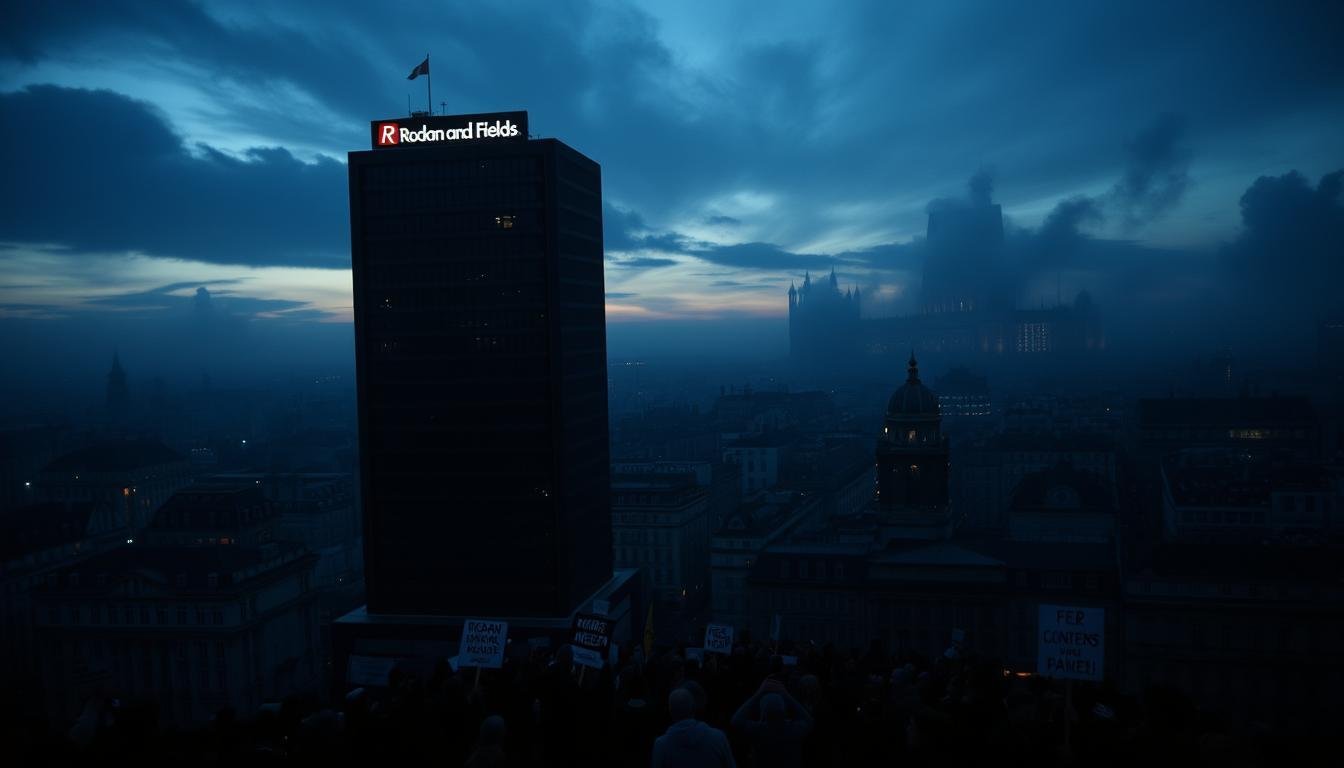Why is Rodan and Fields Banned in Europe? You might have heard that Rodan and Fields, a well-known skincare brand in the U.S., is banned in Europe. This brand offers a wide range of skincare products that promise great results.
However, some ingredients in these products have worried European regulatory bodies. As a consumer, it’s important to know why this ban exists and what it means for you.
The skincare industry is closely watched, and Europe has strict rules about product safety and ingredients. If you’re using or thinking about Rodan and Fields products, knowing these differences is crucial.
Contents
- 1 Understanding Rodan and Fields: Company Background
- 2 Why is Rodan and Fields Banned in Europe?
- 3 European Cosmetic Regulations vs. US Standards
- 4 Implications for Consumers and the Brand
- 5 Conclusion: Why is Rodan and Fields Banned in Europe?
- 6 FAQ
- 6.1 What is Rodan and Fields?
- 6.2 Why is Rodan and Fields banned in Europe?
- 6.3 What are coal tar and hydroquinone used for in skincare?
- 6.4 Why are coal tar and hydroquinone banned in Europe?
- 6.5 How do European cosmetic regulations differ from US standards?
- 6.6 What are the implications of the Rodan and Fields ban in Europe for consumers?
- 6.7 What does the ban mean for the Rodan and Fields brand?
- 6.8 Are there other skincare brands with similar issues?
- 6.9 How can consumers make informed choices about their skincare routine?
Understanding Rodan and Fields: Company Background
The story of Rodan and Fields starts with Dr. Katie Rodan and Dr. Kathy Fields. They used their dermatology knowledge to make skincare products. They wanted to offer solutions that could be used at home.
Rodan and Fields aimed to provide multi-step skincare systems for different skin issues. Their products tackle acne, aging, and hyperpigmentation. You might be using their products without knowing about the ingredient controversy.
The company sells products directly, through their website or consultants. This direct sales approach has made the brand popular and far-reaching. But, some ingredients in their products have raised concerns, especially in Europe.
To understand the Rodan and Fields ingredients controversy, we need to look at their products and regulations. Rodan and Fields is well-known in the US. But, its products don’t always meet European cosmetic standards, leading to controversy.
Exploring the ban in Europe requires looking at US and European cosmetic rules. We must see how Rodan and Fields’ products fit into these regulations.
Why is Rodan and Fields Banned in Europe?
The ban on Rodan and Fields in Europe is mainly because of certain ingredients in their products. You might wonder why these ingredients are a big deal.
Coal Tar and Hydroquinone Concerns
Certain Rodan and Fields products have coal tar, a known carcinogen. Coal tar is heavily restricted in cosmetics in Europe because of health risks. You should be cautious when using products containing such chemicals.
Hydroquinone, used for skin lightening, is banned in many European countries. This is because of safety concerns. The European rules are stricter than in the US, so hydroquinone is not allowed.
Other Problematic Chemicals
Other chemicals in Rodan and Fields products have also raised concerns. For example, some formulations contain chemicals that might cause skin irritation or other problems.
| Chemical | Use in Rodan and Fields | European Regulatory Status |
|---|---|---|
| Coal Tar | Used in certain products | Heavily restricted |
| Hydroquinone | Used for skin lightening | Banned |
| Other chemicals | Varying uses | Restricted or banned |
The table shows that Europe has strict rules for cosmetics. This strictness comes from the precautionary principle to protect health.
As a consumer, knowing what’s in your products is key. The Rodan and Fields controversy shows how important transparency and safety are in the cosmetics world.
European Cosmetic Regulations vs. US Standards
Did you know the European Union has stricter cosmetic rules than the US? This difference is key to understanding why Rodan and Fields is banned in Europe.
The EU has banned over 1,300 chemicals in cosmetics. In contrast, the US has banned only about 11. This big difference shows Europe’s careful approach to keeping cosmetics safe for consumers.

- Stricter ingredient safety standards in the EU, which require more rigorous testing and assessment.
- A pre-market approval system in the EU, where cosmetics are assessed before they are sold, unlike in the US where the FDA does not approve cosmetics before they go to market.
- The EU’s prohibition on animal testing for cosmetics, which has been in place since 2013, reflecting a commitment to ethical consumerism.
These differences show two different ways to ensure consumer safety and regulate products. The EU’s strict rules aim to protect people from harmful ingredients. Meanwhile, the US is often seen as too lenient in its regulations.
Implications of Regulatory Differences
The effects of these regulatory differences are big for both consumers and cosmetic companies. For people, it means US products might have banned ingredients in Europe. This is because of safety concerns.
| Regulatory Aspect | European Union | United States |
|---|---|---|
| Chemicals banned in cosmetics | Over 1,300 | About 11 |
| Pre-market approval | Required | Not required |
| Animal testing | Prohibited since 2013 | Not federally banned |
For companies like Rodan and Fields, knowing and following these rules is vital. It helps them get into markets and keep a good reputation. As people learn more about what’s in their cosmetics, they’ll want safer, clearer products.
Implications for Consumers and the Brand
The European ban on Rodan and Fields raises important questions about product safety and brand strategy. As a consumer, you might wonder about the ingredients in Rodan and Fields products. You might ask if they meet your safety standards.
The ban means products not approved in Europe might have ingredients not considered safe. This makes you think about the products you use. You might look for alternatives that meet European standards.
For the brand, the ban means they need to rethink their product formulations. Rodan and Fields must reformulate products or adjust their marketing to meet European regulations. This is crucial for different regions.
Key Implications
- Consumer Trust: The ban may change how you see the brand’s commitment to safety and quality.
- Product Reformulation: Rodan and Fields might need to change their products to meet European standards. This could change what products you have access to.
- Market Strategy: The brand might need to change its global market strategy. This could affect its plans to grow.
As Rodan and Fields deals with these challenges, you’ll likely be watching. The brand’s response to the ban and efforts to follow European regulations are key. They will help keep your trust and loyalty.
In summary, the ban on Rodan and Fields in Europe has big effects. It impacts how consumers see the brand and the brand’s strategies. As things change, it’s important for the brand to talk to its customers and adjust to new rules.
Conclusion: Why is Rodan and Fields Banned in Europe?
You now know why Rodan and Fields products are banned in Europe. The main reason is the use of ingredients not allowed by European cosmetic rules. It’s crucial to check the ingredients in your skincare products and know the rules.
The ban on Rodan and Fields in Europe shows the difference in cosmetic safety rules between Europe and the US. Rodan and Fields still operates in the US. But the European ban reminds us to be careful about what we use.
Being informed helps you choose better skincare. This way, you can pick products that meet your safety and effectiveness standards.
See Also: Is To Kill a Mockingbird Banned in Texas?
FAQ
What is Rodan and Fields?
Rodan and Fields is a skincare brand. It was started by dermatologists Dr. Katie Rodan and Dr. Kathy Fields. They are known for their multi-step skincare systems.
Why is Rodan and Fields banned in Europe?
Rodan and Fields is banned in Europe because of certain ingredients. These include coal tar and hydroquinone. Both have been linked to health risks.
What are coal tar and hydroquinone used for in skincare?
Coal tar is used for its antiseptic and anti-inflammatory properties. Hydroquinone is used to lighten the skin.
Why are coal tar and hydroquinone banned in Europe?
Coal tar is a known carcinogen. Its use is restricted in cosmetics in Europe. Hydroquinone is banned in many European countries due to safety concerns.
How do European cosmetic regulations differ from US standards?
The European Union has stricter cosmetic ingredient regulations. They have banned over 1,300 chemicals. In contrast, the US has banned only about 11.
What are the implications of the Rodan and Fields ban in Europe for consumers?
The ban makes consumers question the safety of certain products. It encourages them to be more aware of skincare ingredients.
What does the ban mean for the Rodan and Fields brand?
The ban means Rodan and Fields must rethink their product formulations. They need to comply with different regulatory standards to enter the European market.
Are there other skincare brands with similar issues?
Yes, other skincare brands may face similar issues. This highlights the need for brands to adapt to different regulatory environments.
How can consumers make informed choices about their skincare routine?
Consumers can make informed choices by knowing the ingredients in their products. They should also understand the regulatory environment surrounding these products.

Marcellus Stark is an investigative journalist from San Francisco, USA. He writes about global bans, rules, and unusual laws. He shares clear, interesting, and well-researched stories that help readers understand surprising facts worldwide.

